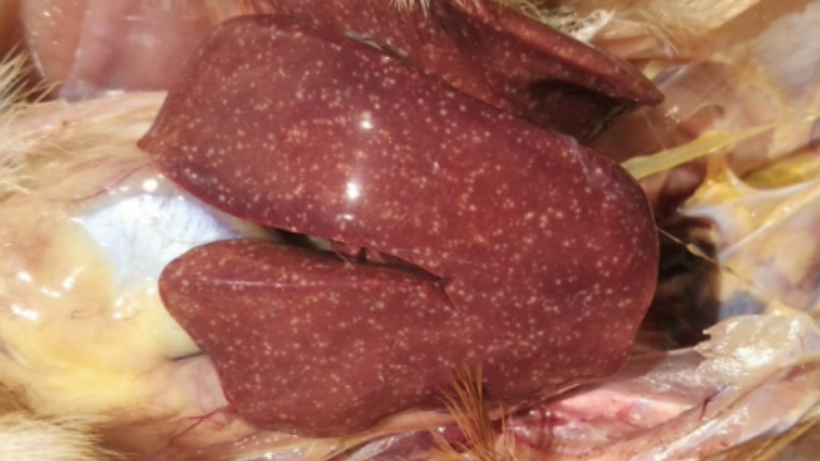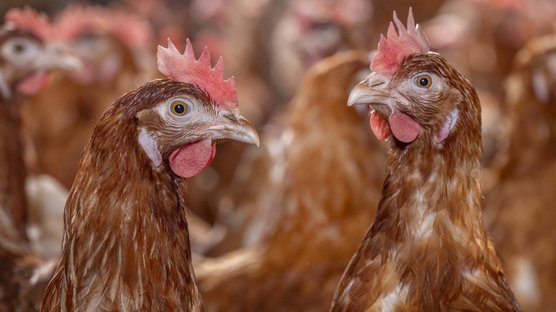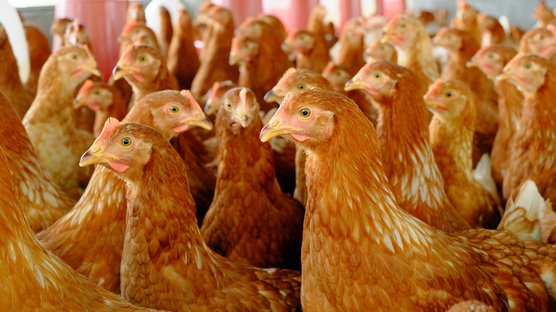
Published on Dec. 14, 2023
Spotty Liver Disease (Campylobacter Hepaticus)
Campylobacter Hepaticus, the bacterium responsible for spotty liver disease (SLD), poses a threat to free-range egg laying hens, primarily in regions like Australia, the United States, France and the United Kingdom. The disease, sporadic in occurrence, is linked to Campylobacter spp. infection and manifests as an acute infectious condition. Environmental contamination from bird feces serves as the primary mode of transmission for both C. Jejuni and C. Hepaticus.
Although the exact transmission mechanisms vary, some Campylobacter species can spread vertically, either on the surface of eggs or through transovarial transmission. SLD cases are prevalent during warmer months, but occurrences can be year-round depending on the geographical area. Hens, especially during peak lay periods, are particularly vulnerable to this disease, emphasizing the need for vigilant monitoring and biosecurity measures in affected regions.
Clinical signs
Birds infected with Campylobacter Hepaticus (C. hepaticus) display various clinical signs, including focal hepatic necrosis of varying severity, leading to spotty livers, increased mortality rates (up to 15%), and decreased egg production. Rapid deaths in infected layer flocks indicate acute septicemia and toxemia involvement. Additionally, affected birds exhibit dull and ruffled feathers, changes in feather color, beak/nail overgrowth, shrunken combs, lethargy, and weakness. These symptoms are most prevalent in flocks during peak production but can occur throughout the year. Mortality rates can spike by more than 1% per day and reach up to 10% in total. Decreased egg production, sometimes by as much as 25%, is common in affected flocks, although not all sick animals show observable symptoms due to the swift progression of the disease. Vigilant monitoring is crucial to managing the impact of C. Hepaticus infections in poultry flocks, especially during peak production periods.

Diagnosis
Diagnosing Campylobacter infections in avian species, particularly C. Hepaticus, poses challenges as no reliable serologic tests are available. Bacteriologic culture of fecal samples is a method for detecting colonized birds, but it is complicated due to the organism’s susceptibility to antimicrobials used in common Campylobacter enrichment media and selective agar. For C. Hepaticus, samples should ideally come from the liver or bile; using feces or cecal droppings for diagnosis is unreliable. Some labs also developed PCR tests. A presumptive diagnosis can be made post-mortem by identifying characteristic small yellow-white necrotic hepatic lesions, fibrinous perihepatitis, excess pericardial and peritoneal fluid, and typically enteritis with diarrhea. Histopathological examination reveals multifocal acute hepatocellular necrosis with fibrin and occasional hemorrhage, aiding in the diagnosis of Campylobacter infections in avian species.
Treatment and control
Effective control measures for spotty liver disease, caused by Campylobacter Hepaticus, emphasize improved biosecurity and hygiene practices. To manage outbreaks, antibiotics such as chlortetracycline and lincomycin are employed, although concerns about antibiotic resistance and the egg withdrawal period for layers need careful consideration. If a bird is infected, isolating it from the flock in a secure, warm environment with easy access to water and feed while minimizing stress is essential, and consulting a veterinarian is advised. Biosecurity plays a pivotal role in preventing farm infections and limiting inter-stable transmission. Although there is no registered vaccine for C. Hepaticus, the potential use of herd-specific (autogenous) vaccines is being explored, but bacteria isolation and culture is not easy and their efficacy requires further evaluation. Additionally, ongoing research into preventive measures, including promising findings related to biochar usage, is underway, indicating a potential avenue for disease management pending further study.
References
- Dopharma. (2020, June 16). Spotty liver disease in poultry. Dopharma. https://www.dopharma.com/technical-support/spotty-liver-disease-in-poultry/
- Hananeh, W., & Ababneh, M. (2021). Spotty liver disease in Jordan: An emerging disease. Veterinární Medicína, 66(3), 94–98. https://doi.org/10.17221/73/2020-VETMED
- Poultry DVM. (n.d.). Spotty Liver Disease . Poultry DVM. Retrieved October 5, 2023, from https://poultrydvm.com/condition/spotty-liver-disease
- Qijing Zhang. (2023). Campylobacteriosis in Birds. MSD Manual, Veterinary Manual. https://www.msdvetmanual.com/poultry/campylobacteriosis-in-birds/campylobacteriosis-in-birds?query=Campylobacter%20hepaticus



